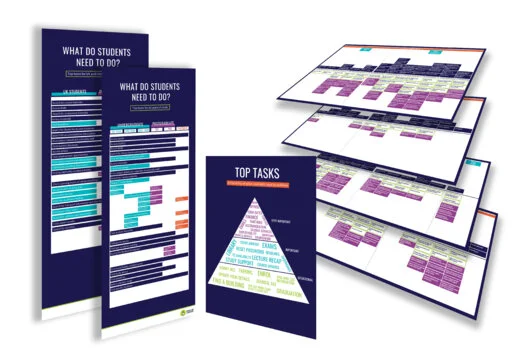Nottingham Trent University: discovering student behaviours for a intranet redesign
Following our previous discovery work for Nottingham Trent University’s new staff intranet, we were commissioned to lead the discovery phase for the redesign of the student intranet too. As part of this, we were asked to research and recommend new approaches to consider in the redesign, with a focus on uncovering top tasks and user needs.
To do this, we knew we needed…
To better understand current students’ needs and behaviours
To identify the priority tasks in their university life
To discover how current students typically use university systems
To identify how a new intranet could best serve them.
This work involved:
A performance review of the current intranet (which included heatmapping, analytics review and session recordings)
Various audience research methods to gain insights from current students
Top-level recommendations for substance, information architecture, content strategy, priority content types and content personalisation.
We used a range of research methods to delve into students’ needs, desires and motivations, including focus groups, survey, card sort activities, user testing and - most interestingly - diary studies.
Diary studies are a longitudinal research method that gathers real-time reflections, behaviours and interests over a period of time. Our work began in September 2019, so it was the perfect timing to capture the experiences of current NTU students from the start of the academic year through to the beginning of the second term. Within this, we were able to find out how these students were feeling, the information they needed, and the other distractions in their life around some key university dates: the start of the year (and a new term), the term itself, revision period, Christmas holidays, and the exam period.
Diary studies gave us the opportunity to gain detailed insights into the entire spectrum of student life from the perspective of the student themselves - and importantly, to see how the intranet fits into their lives organically. It hands the narrative to students and allows them to tell their story of student life in their own words.
As a result of this study, we captured data that could be used to prioritise or add new content on the intranet not considered before, as well as providing an insight into students’ lives beyond the intranet or the university itself. We were also able to create a series of mental models which included:
The tasks students needed to complete during the year - or sometimes at only certain points of the year
The required content that NTU should provide to address that need
Suggestions for content ideas that could improve/streamline their user journey.


